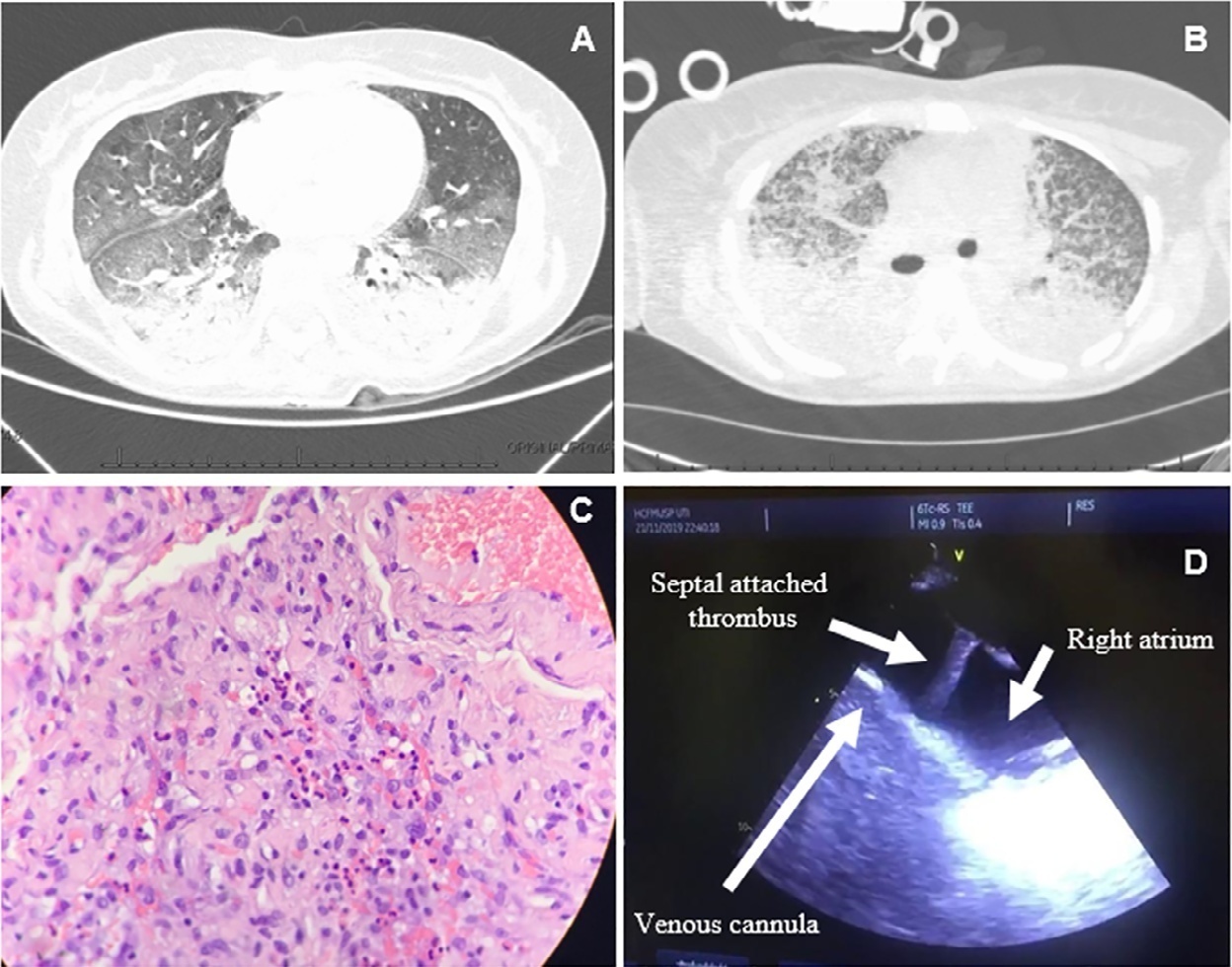
Acute eosinophilic pneumonia (AEP) is a rare cause of acute respiratory failure that affects people aged 20-40 years old.() Patients with AEP present with rapid onset of cough, dyspnea, tachypnea and fever of usually less than 7 days of duration. Hypoxemia is present in all cases, and most patients do not have peripheral blood eosinophilia. In contrast, an increase in eosinophils in bronchoalveolar lavage fluid (BALF) is a marker of the disease, exceeding 20% of the BALF cell count in most patients. Radiographs show mixed reticular and alveolar infiltrates, which then can progress to be densely alveolar as the condition worsens.(,) Acute and organizing diffuse alveolar damage is common and is usually responsive to corticosteroids.()
The major causes of pulmonary eosinophilia include inhalation of antigens, such as demolition dust, cigarette smoke, electronic cigarettes, cannabis, crack cocaine; parasitic and fungal infections; HIV infection; previous irradiation of the chest; and recent use of drugs associated with pulmonary eosinophilia, such as ranitidine, venlafaxine, infliximab, phenytoin, nitrofurantoin, beta-lactam antibiotics, sulfazalazine-mesalazine, among others. Differential diagnosis includes acute interstitial pneumonia, cryptogenic organizing pneumonia, diffuse alveolar hemorrhage and granulomatosis with polyangiitis. These conditions have similar clinical presentations but without pulmonary eosinophilia.
[…]
Search
Search in:


Comments